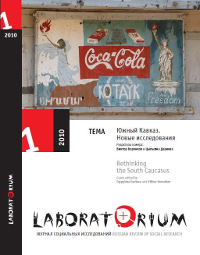An Essay about the Border
Main Article Content
Abstract
Part of a series of essays by Russian sociologists who took part in a two-week “fieldwork school” on both sides of the Russian-Abkhazian border in 2005, this paper reflects on changing conceptions of borders and boundaries. Once seen as solid and impenetrable, borders are now often viewed as special kinds of social and cultural spaces that enable experiences of freedom and diversity. However, this romanticized view is often articulated by Western intellectuals who experience borders as open transit zones. Instead of contrasting open and closed borders, the author suggests the concept of “border regimes”—trade, tourist, military—that affect all borders at different times and in different ways. Rules, even informal ones, appear not to apply in the space that constitutes the Russian-Abkhazian border. The border is perhaps best understood as a hologram where individuals are caught in ever-changing situations. In Russian, summary in English.
Keywords
Abstract 90 | PDF Full Paper (Русский) Downloads 62 PDF Extended Summary Downloads 23 HTML Full Paper (Русский) Downloads 8 HTML Extended Summary Downloads 2

